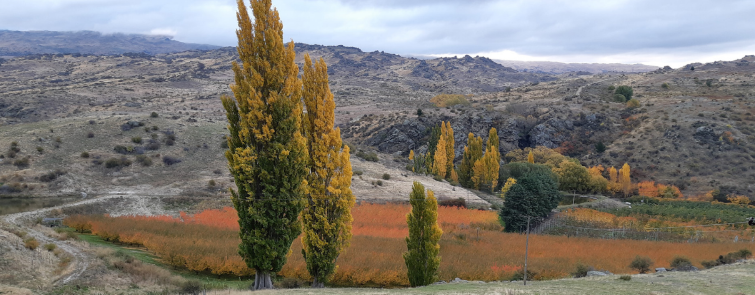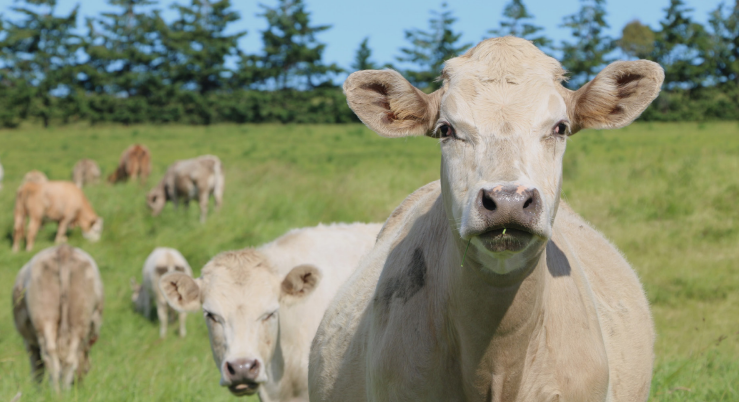“In essence, it’s a window into rural businesses and their production systems in 2022 – at a time when the
region, and New Zealand, appears to be heading into territory that is new” – the report concludes.
The report, Farmers and Growers in Otago, was developed by an ORC Industry Advisory Group and is being
publicly released today. It is the first of five studies that comprise the ORC’s economic work programme,
which supports the new Land and Water Regional Plan.
“In completing this first report, the organisations involved have created a valuable resource for Otago and shown their commitment to the region,” the summary says.
ORC collaboration with rural industries
In recognising the relevance of industry expertise, ORC convened the Industry Advisory Group in October 2021, as a joint initiative with rural sector industry groups, who have been actively working on this ever since.
The Group is made up of the Foundation for Arable Research, Horticulture New Zealand, Deer Industry New Zealand, Beef + Lamb New Zealand, Dairy NZ, and the Central Otago Winegrowers Association, along with the Ministry for Primary Industries.
Deer Industry NZ representative and Otago local, Tony Pearse said of the Group: “It has provided a rewarding opportunity to work together in a diverse team of primary sector representatives.”
Leanne Roberts of Horticulture NZ welcomed the opportunity to contribute to the report, saying “It highlights the contribution that orcharding and market gardening make in this region.”
While the Foundation for Arable Research’s Abie Horrocks highlighted regional diversity: “Collaborating with cropping farmers to develop the chapter on arable farming in Otago has provided a great opportunity to share the sector’s rich cropping history, how it has evolved and the extent of regional diversity, complexity and integration with other sectors.”
The Ministry for Primary Industries also made an important contribution, ensuring sufficient Otago farm data was available from the National Farm Monitoring and Benchmarking Project for industry groups to use.


A new information resource for Otago: Report
The report brings together information on farming and growing practices across Otago and spanning at least 150 years of the region’s land development.
There are six industry-specific chapters in the report; covering sheep and beef, deer, arable, dairy, horticulture, and viticulture.
Each of the six industry chapters cover historical context, size, distribution, key features, production and processing systems and markets, along with any relevant industry specific topics such as cropping rotation, irrigation or wintering practices.
The report provides foundational information on the current state of key rural industries in Otago for the Land and Water Plan, but will also be a wider resource for many in the community to use.
“This information has not been brought together for Otago previously and will not only inform the Land and Water Regional Plan, but also provide a significant new resource of knowledge for the region,” the report says.
New policy needs to understand farming and growing in Otago: Report
The new Land and Water Regional Plan includes setting, and operating within, environmental ‘limits’ for water quality and water quantity, under the National Policy Statement for Freshwater Management 2020.
The report starts by stating that a firm understanding of farming and growing in a region is a ‘necessary condition’ for developing a policy response to address freshwater issues.
“Although this statement may seem obvious, it’s particularly the case in Otago, where the region’s distinct environments influence the scale, distribution and nature of rural land use, and their relationship with fresh water.”
This report explores these characteristics, highlighting the complexity, diversity, connectivity and flexibility of farmer and grower production systems within each industry along the way.
DairyNZ general manager sustainable dairy, Dr David Burger, says DairyNZ is committed to working with primary sector partners to support farmers across New Zealand. “A joint approach is the best way to ensure positive outcomes for farmers, and we fully support ORC’s efforts to understand the sector, so it can develop policies that meet farmers’ needs.”


Beef + Lamb New Zealand’s Chief Economist Andrew Burtt says the report puts in context “the breadth and depth of the farming and growing activities in Otago.”
“We applaud the work by ORC to develop an understanding of sheep and beef farming and its integration with other sectors, and the linkages to other regions.”
“As the report says, the quality of this resource reflects sheep and beef farmers’ long-term commitment to the industry.”
Deer Industry NZ representative Tony Pearse highlighted the contribution to the regional economy.
“The report has constructively increased our awareness of the regional diversity of Otago’s primary industries, their contribution to the regional economy and the management challenges ahead in meeting freshwater regulation.”
Central Otago Winegrowers Association (COWA) advocacy spokesman Andy Wilkinson also emphasised the positive collaboration.
“With winegrowing playing such a key role in our rural community, as well as being a significant economic contributor, the Central Otago Winegrowers Association was delighted to participate in the Industry Advisory Group and in the development of Otago’s regional Land and Water policies.”
ORC’s Economic Work Programme
The Farmers and Growers of Otago report is the first of five reports from ORC’s Economic Work Programme.
The other reports from the programme, expected to be ready in early 2023 are:
- 2. Summary of Otago’s Catchment Stories, which will include a summary of interviews with catchment and other groups about what they are currently doing to manage land and water and their local scale issues and challenges
- 3. Testing the Impacts of Environmental Actions, which will model impacts of possible environmental actions on the businesses of around 50 case study farmers and growers
- 4. An Otago Economic Profile for Fresh Water and Land, which will explore the contribution of each industry to Otago’s economy and show how each sector uses land and fresh water
- 5. Fresh water and the economies of Kai Tahu and Māori in Otago, which will look at the socio-economic impact of freshwater management decisions on mana whenua in Otago and other Māori; including the place of wai māori in the Kāi Tahu economy in Otago and examine the likely impacts of the proposed Land and Water Regional Plan
Legislative requirements and looking to future plans
ORC is required to implement the National Policy Statement for Freshwater Management 2020 for Otago, plus regulations in the National Environmental Standards for Freshwater; relating to both stock exclusion and water takes, and in the forthcoming certified Freshwater Farm Plans.
ORC is required to prepare its plan 12-months ahead of the rest of the country.
For Otago, all these legislative requirements are within the development of ORC’s new Land and Water Regional Plan, which manage activities relevant to rural and urban communities.
ORC will notify a proposed Land and Water Regional Plan by the end of 2023, which will ultimately replace the now-outdated Regional Plan Water: for Otago; operative since 2004, and the Regional Plan: Waste for Otago.
